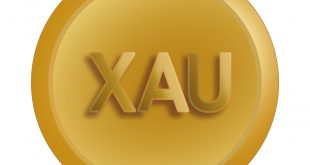The Shanghai hard fork of Ethereum, scheduled for March, will handle developer costs and tokens staked in the ETH 2.0 deposit contract. On February 28, the Shapella hard fork, which combines the execution and consensus layer forks of Shanghai and Capella, will go live on the Sepolia testnet.
After the Merge in 2022, when the Ethereum ecosystem will switch to an energy-efficient Proof-of-Stake blockchain, the hard fork will usher in a new era. The Sepolia testnet will launch at 4 PM UTC on February 28 and the Shapella hard fork will take place in March 2023 on the Ethereum network.
The Shanghai and Capella hard forks together represent a significant step in the development of the biggest altcoin in the crypto world. forthcoming test network.
The Shanghai hard fork of Ethereum, scheduled for March 2023, is a significant advancement for ETH. With the ability to withdraw funds from the Beacon Chain, it represents one of the largest breakthroughs for the Ethereum network.
In the year since the Beacon Chain staking contract went live, nearly a sixth of the entire Ethereum supply has been staked. The Ethereum token unlock, designated as Ethereum Improvement Proposal (EIP) 4895, is the most significant change in the hard fork.
Validators had to lock away their ETH and any incentives they had received during The Merge until a later chain update. Due to this, a sizable portion of Ethereum’s supply was kept off exchanges. As a result, there was less selling pressure on ETH on international cryptocurrency exchanges.
What to expect
Developers have scheduled testnets before the Shanghai upgrade is released on the Ethereum mainnet. Validator withdrawals and other features that will be available on the mainnet will be tested on Sepolia, the second-to-last testnet.
Developers will be able to test smart contract features on the private testnet using Sepolia ETH, a unique testnet currency. On the new consensus layer of the Sepolia testnet, validator nodes can only be run by authorised parties.
The Shanghai hard fork may be on schedule if the Sepolia testnet is a success. At 4 PM UTC, the Shapella hard fork, which combines the Shanghai and Capella consensus and execution layer forks, will go live on the Sepolia testnet.
The long-awaited improvement, which follows The Merge in the development process, is slated to launch after months of testing, according to developers. Validators will be able to move their stake from the Beacon Chain to the execution layer thanks to Shapella. It will simultaneously add new features to the execution layer and consensus layer.

 Noor Trends News, Technical Analysis, Educational Tools and Recommendations
Noor Trends News, Technical Analysis, Educational Tools and Recommendations




